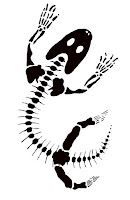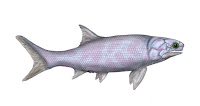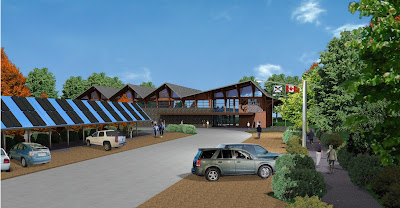Sink Your Teeth Into This Blog
Tetrapod jaw fragment (about 1.5 cm long) with 3 marginal teeth spaced at regular intervals, a narrow dorsal shelf, and a conspicuously striated surface where the dentary encloses the meckelian element. All three of these traits indicate this is not a jaw that belonged to the big Blue Beach fish (Letognathus). By process of elimination we can thus assign it to the tetrapods, but can say very little more about it for now. Blue Beach and a few Scottish sites are producing the only tetrapod bones from the Tournaisian age.
...There are very few regions of the world in which fossils of the earliest land vertebrates (tetrapods: the first members of the group to which humans, along with other mammals, birds and reptiles ultimately derive) can be found.
These fossil are key to closing a gap in the fossil record that has existed for about 11 decades. This hiatus had denied scientists a deep understanding of how tetrapods lived and evolved their terrestrial adaptations....Dr. Jennifer A. Clack ScD FRS
Emeritus Professor of Vertebrate Palaeontology University Museum of Zoology
Cambridge, United Kingdom
Join our Plans to Build a 'Paleo-Centre'
Please 'Share' our blogs to help the Blue Beach Fossil Museum Society Find A "Funding Champion"
Please 'Share' our blogs to help the Blue Beach Fossil Museum Society Find A "Funding Champion"
Thank You!
Feel free to contact us at:
---
THANKS FOR READING 







Comments
Post a Comment